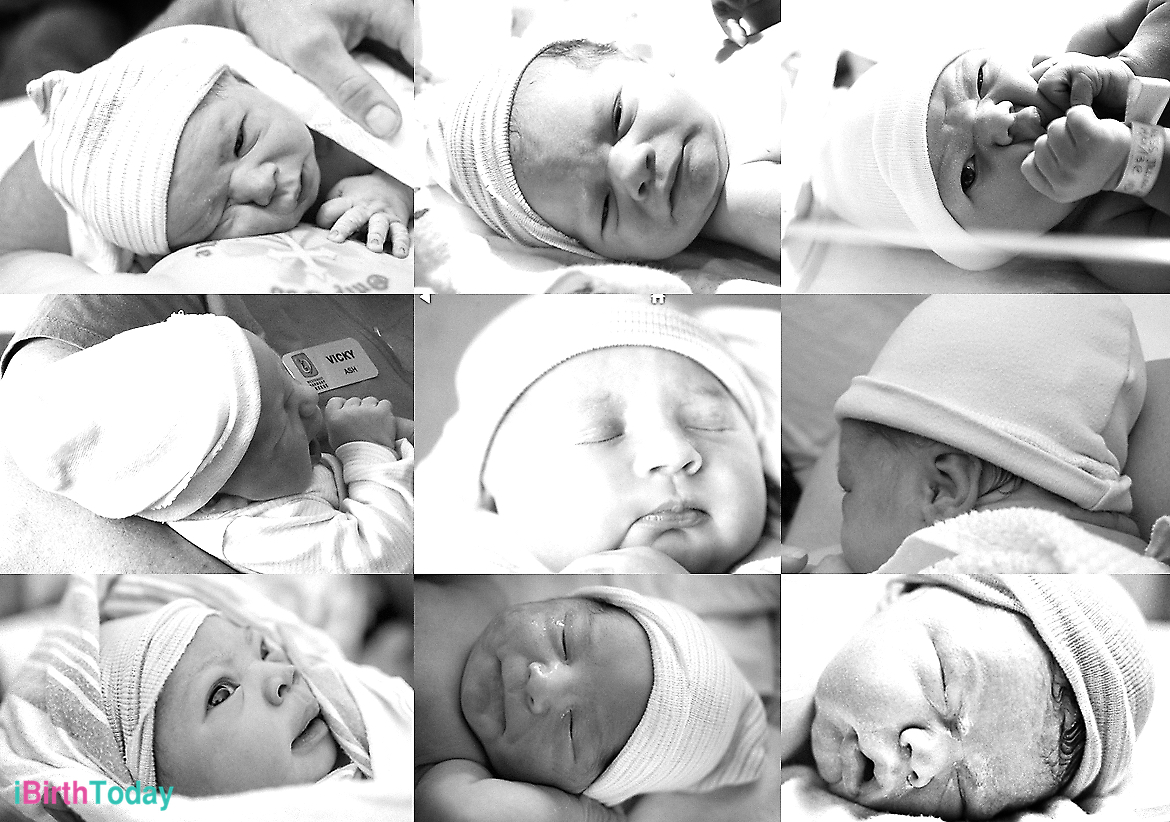Is a hat that utmost essential item which must be applied to every new-born head?
No. See above!
Skin to skin contact means mom and baby in skin-to-skin contact. Without physical barriers between them. The hat seems almost an obsession in some regions. I've even seen hats used during water birth, with an attendant placing the hat as soon as the baby emerges from the water! In spite of steam visibly curling from the water's surface, the hat was provided in reaction to the fear of the baby “getting cold”!
A hat is a physical and emotional barrier between the woman and her baby. It restricts her view, it may restrict the baby's view. The hat reduces tactile sensation for both; the touch and feel of the baby's hair,the feel of the mothers arm. It reduces scent sensation. It can inhibit the natural instinct many women have of wanting to rub their baby's head, or nuzzle their ears. Many mothers instinctively stroke the back of their baby's head. With a hat on, they are stroking cloth instead. Neither of them can feel it as they should.
We use hats because we want to reduce the risk of hypothermia, but we now know the best prevention for hypothermia is skin-to-skin contact of mother and baby. Without any barriers. Not even hats!
Here is one more bit of information to help you decide about hats; a hat has almost no
effect on heat preservation.
The gauze hats ubiquitous in hospitals and birth kits, don't work: "10 infants were studied while wearing a tubegauze hat at environmental temperatures of 28.5 (+/- 0.5) degrees C. This type of hat gave no measurable thermal protection."*
The cochrane database did a review of studies on Skin-To-Skin contact and had some intriguing conclusions: "Early skin-to-skin contact (SSC) begins ideally at birth and involves placing the naked baby, covered across the back with a warm blanket, prone on the mother's bare chest <...> This time may represent a psychophysiologically "sensitive period" for programming future behavior."
Women who had early Skin-To-Skin contact with their babies showed positive effects on early breastfeeding, and longer duration of breastfeeding compared to women who experienced the usual hospital routines. They also scored higher on tests for maternal attachment. The review concludes that early skin to skin contact: "May benefit breastfeeding outcomes, early mother-infant attachment, infant crying and cardio-respiratory stability, and has no apparent short or long-term negative effects."**
* Head insulation and heat loss in the newborn. Stothers JK. Arch Dis Child. 1981 Jul;56(7):530-4.
** Early skin-to-skin contact for mothers and their healthy newborn infants. Moore ER, Anderson GC, Bergman N. Cochrane Database Syst Rev. 2007 Jul 18;(3):CD003519.
Photo: cincinnatibirthphotography, docubirth, Calla Evans Photography, heathercookelliott, bayleerobertsonphotography, sarapanman, Melissa Cate, fermontfotografie, tamarakenyon, catherinehilcove
$15000What do you know about Midwifery and Birth in Russia? Would you like to know more about traditional remedies, "banya" practises and other cool tricks? How about baby gymnastic? And much more: 20 speakers from Russia, Europe and USA will share their amazing knowledge for mothers, doulas, midwives and monitrices: unique recipes of placental tinctures […]
$35Second part of Midwifery Essentials course For all questions: katerina.perkhova Comments comments
$40First part of Midwifery Essentials course For all questions: katerina.perkhova Comments comments
$110Join our 6th International Conference with more than 20 speakers from Russia, USA and Europe! The Domashni Rebenok Magazine Conference is the most inspiring and useful event for parents, doulas, midwives and medical professionals who are interested in natural birth. It is the 6th year when we, following your demand gather in Russia the brightest […]
$10The class was recorded on International Domashny Rebenok Conference (with Midwifery Today support). Russia, Saint Petersburg. May 11–15, 2016 SoundBirth: a method developed by Hilkka-Liisa Vuori. Your own voice can help you relax in childbirth! Women naturally make sounds during labour, but these sounds are many times uncontrolled. You can learn to use relaxing sounds consciously and deliberately […]
$45This workshop contains power-packed information from a great midwife whose knowledge comes from attending over 8000 births. You will learn about the use of herbs, homeopathy, aromatherapy and other natural remedies in pregnancy, birth and postpartum. Learn practical uses of these remedies for your clients’ ailments and complications, such as using alternatives to halt a hemorrhage and how to keep your […]
$25Gail will share her insights and research findings on the hormonal states of mother and baby and the interaction that occurs during Human Bonding in the First Hour after birth. She will show how we can facilitate this essential process by making simple alterations in common birth practices. Gail’s teaching on this subject makes it […]
$1050Great news dear midwives and doulas! We got so many requests from you last month and we decide to make for you the Special Offer till the end of February — 30% off! Now you can become a part of our international student team just for $1050 (normal price for course —$1500)! This course has grown […]






 (1 votes, average: 4.00 out of 5)
(1 votes, average: 4.00 out of 5)




 (5 votes, average: 4.60 out of 5)
(5 votes, average: 4.60 out of 5)
No Comments